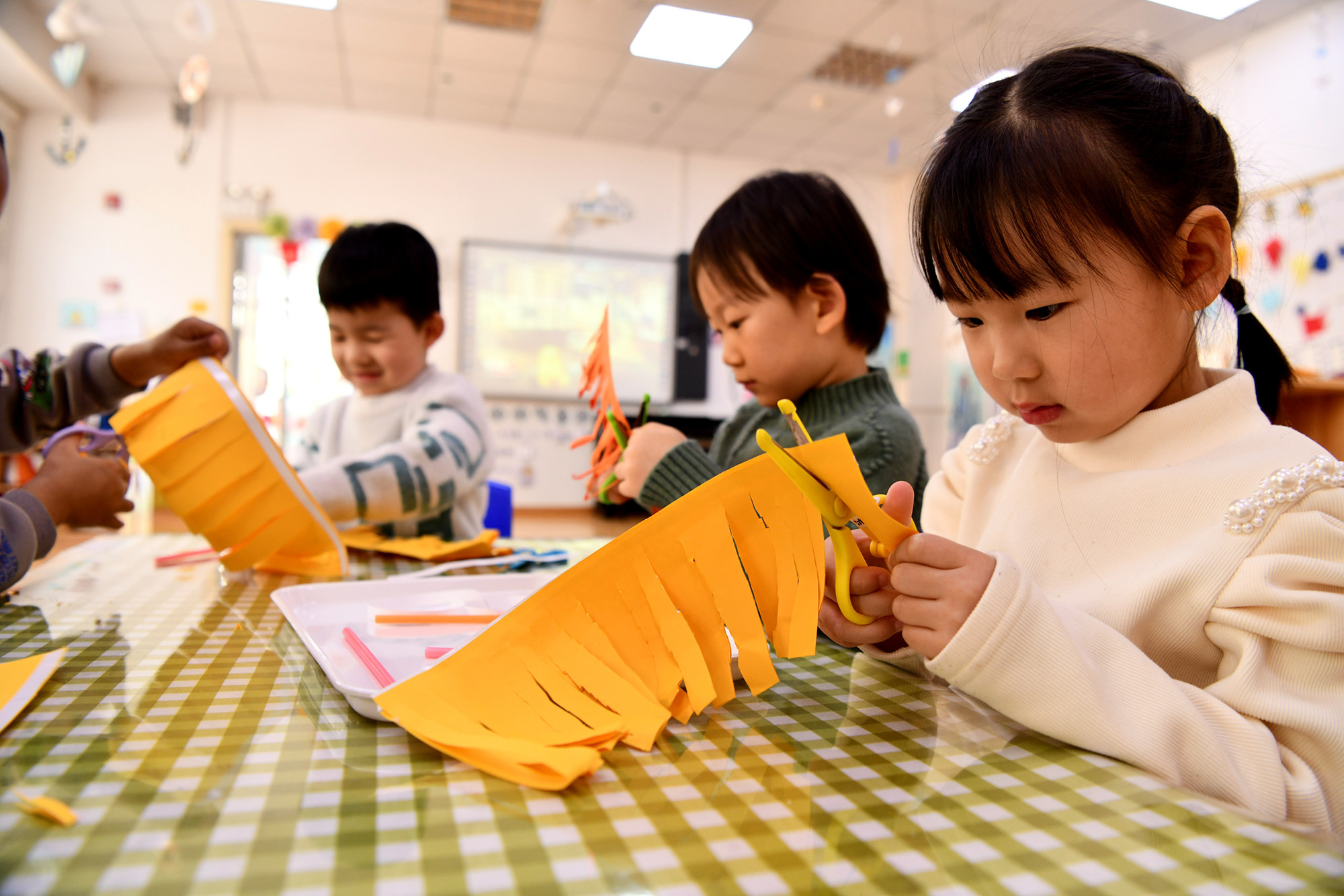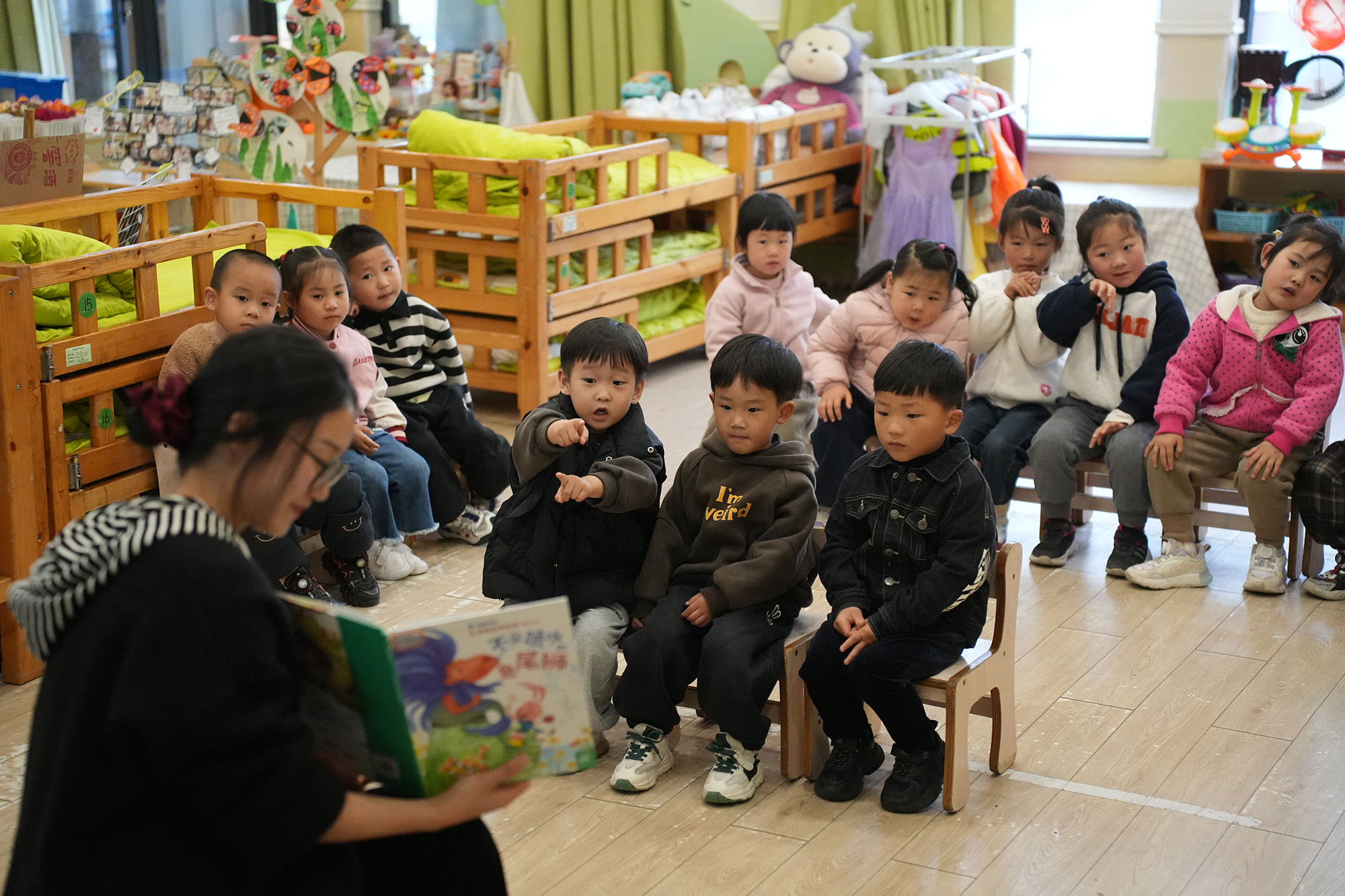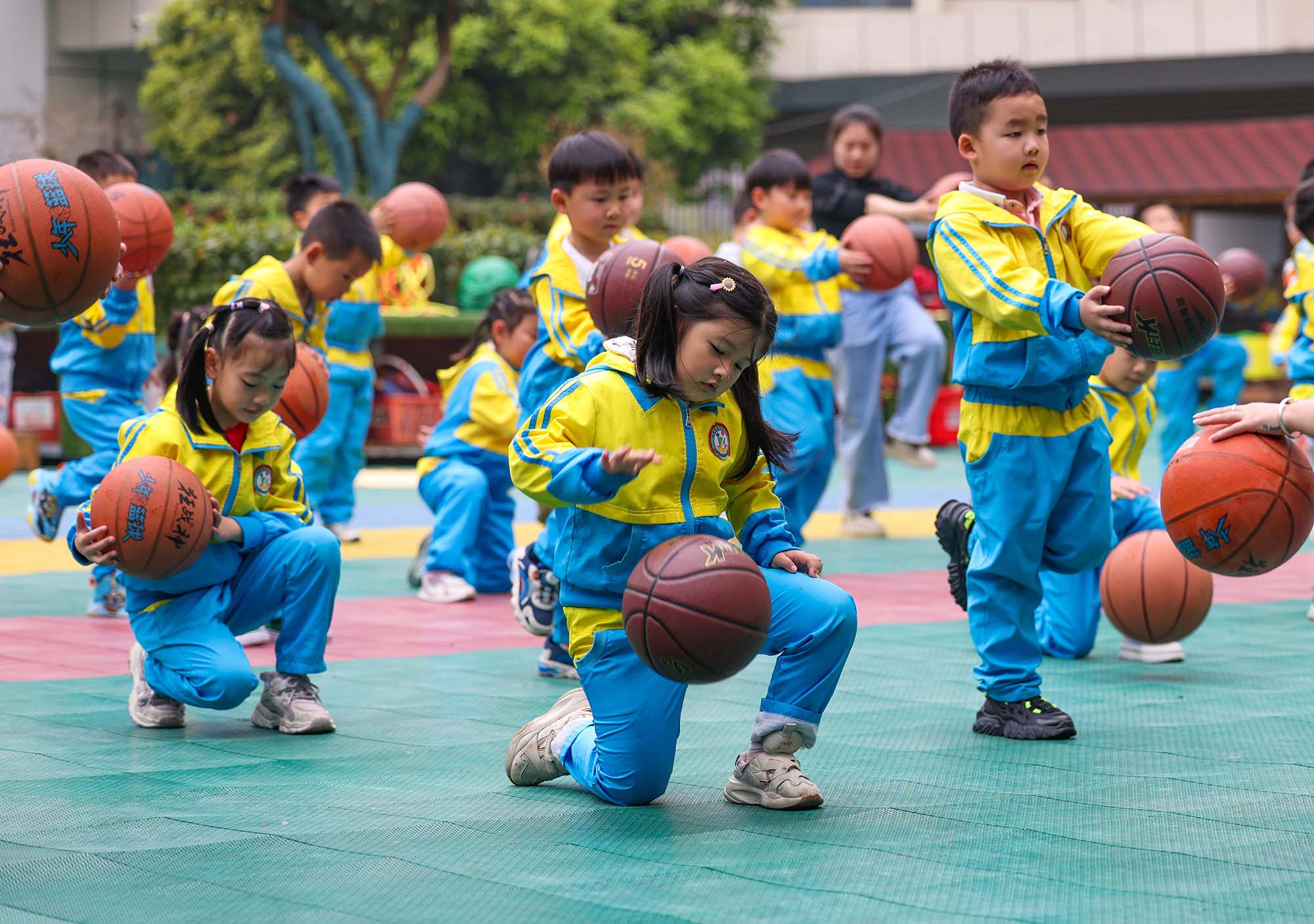Kindergartens could be integrated with childcare services, experts say

With enrollments falling, China's excess kindergartens could be transformed into daycare centers to make up for a shortfall in the nation's childcare resources and to relieve burdens on parents, according to an education expert.
There were 274,400 kindergartens in China last year, with 40.93 million children enrolled, the Ministry of Education said at a news conference last month.
The number of preschool children last year dropped 5.35 million from 2022 and has seen a decrease for three consecutive years, according to the National Bureau of Statistics.
Xiong Bingqi, director of the 21st Century Education Research Institute, said the decline of children in kindergartens is closely related to the decrease in births since 2017.
The nationwide peak in births in 2017, a direct result of the two-child policy implemented in the early 2010s, had the knock-on effect of peaking kindergarten enrollment in 2020 at 48.18 million, its highest point in 17 years.
"Since 2020, the number of kids entering kindergartens has reduced, and it will keep dropping rapidly in the future in line with the declining birth rate," Xiong said.
Births in China in 2021, 2022 and 2023 were 10.62 million, 9.56 million and 9.02 million respectively, according to the NBS.
By 2026, with all children born from 2021 to 2023 enrolled in kindergartens, the total number of preschoolers will be just over 29 million, which is about 12 million fewer than last year, Xiong said.
"It is essential to plan for the development of preschool education based on changes in birth rates," he said.
"If the teacher-to-child ratio remains at the current level, many kindergartens may face closure, and early childhood educators might be at risk of unemployment," Xiong said.
Guo Peng, head of the ministry's department of development planning, said the number of full-time teachers in preschool education hit 3.07 million last year, with one teacher for every 13 children, an improvement from one teacher for every 16 children in 2022.
To address the inevitable surplus of kindergarten capacity, many sites could be turned into inclusive childcare facilities, according to Xiong, accommodating children under the age of 3 and also addressing the national shortage in childcare.
"Childcare services for children age 0 to 3 in China are mainly provided by private institutions, leading to a lack of spaces and difficulty getting in," he said.
Health authorities have been promoting childcare development and encouraging social entities to establish childcare facilities.

The National Health Commission said in late February that there are nearly 100,000 institutions providing childcare services nationwide, with approximately 4.8 million childcare spaces, which is currently insufficient.
"A more practical and effective approach would be to leverage the surplus of kindergarten capacities resulting from the decreasing preschool children and allocate them to toddlers under 3 years old, thereby promoting inclusive childcare," Xiong said.
Political adviser Su Hua said promoting the development of preschool education and inclusive childcare is not only crucial for ensuring that young children receive high-quality education, but also for alleviating burdens on families in terms of both childcare and education.
"Kindergartens can explore personalized childcare services tailored to children age 0 to 3 years old," said Su, who is also the vice-chairman of the National Association of Vocational Education.
Su is researching the scientific adjustment in demand between decreasing kindergarten candidates and insufficient childcare services for toddlers under 3 years old.
Before this year's two sessions that concluded early last month, Su visited a kindergarten at Deyang Foreign Languages School in Sichuan province to learn about its approach to education and teaching facilities.
The private kindergarten includes both regular classes for children over age 3 and childcare services for toddlers. In the morning, children of the daycare class engaged in sensory games under the guidance of teachers. Most of them had adapted well to group activities, Su said.
In the "forest town" set up in the school, children in the kindergarten class dressed as postal workers and rode scooters through the corridors to deliver mail, while others wearing safety helmets played the role of construction workers.
When Su asked about their work, a young "construction worker" said they were building a park.
"Starting vocational education from a young age helps children understand the concepts of labor," Su said, adding that vocational enlightenment in kindergarten can allow children to develop an initial understanding of society.
Qiu Xuejiao, vice-principal of the kindergarten, said the preschool education management has been adjusted according to the changing population.
"In the past, there was more emphasis on the construction of more kindergartens in local communities. However, with the changing demographics in the country, some institutions have insufficient enrollment, leading to closures and mergers," Qiu said.
Meanwhile, kindergartens could open both long-term and temporary daycare classes to supplement childcare services, Qiu said.
According to Su's investigation, infants under 6 months old are mainly taken care of at home, and the caring of those age 6 months to 2 years requires high standards of hygiene and safety.
Early education is needed for children age 2 to 3, so it's suitable to integrate childcare and early education in kindergartens into this group, Su said.

China's preschool education has initially addressed the difficulty in enrollment and high costs. However, challenges remain in the uneven development of preschool education in rural and urban areas, as well as the imbalanced supply-demand structure of resources, Su said.
Currently, there is an opportunity for comprehensively advancing high-quality development in early childhood education, which needs timely adjustments to the goals of early childhood education.
He suggested that kindergartens could have more flexible operating models; for instance, establishing daycare centers in densely populated communities to meet diverse needs.
Additionally, the quality of care and education needs to be enhanced, with more financial investment in place, he added.
Li Guohua, a national political adviser and an official with the Revolutionary Committee of the Chinese Kuomintang, said the challenges of early childhood education could also provide an opportunity to promote high-quality development and free access.
For instance, public first-tier kindergartens in Shanghai charge a monthly tuition fee of 225 yuan ($31.2), Li said, while proposing universal free access to early childhood education in China.
"By exempting tuition fees for kindergarten education while continuing to collect fees for meals and childcare supplies, we can gradually incorporate early childhood education into compulsory education," Li said.
He also called for further reducing the teacher-child ratio, as the current guidelines for staffing standards in kindergartens were issued 11 years ago, stipulating that each kindergarten class should have two full-time teachers, and the ratio of childcare staff to children should be between one staff member for every seven to nine children.
He recommended a revision of the standards, taking current requirements for high-quality development into account.
Dong Yuzheng, president of the Guangdong Social Sciences Association, said the investment and allocation of educational resources should be adjusted along with the changes in population structure.
As the population concentrates toward large and medium-sized cities, rural areas and smaller towns experience a decrease in population, which also leads to a reduction of preschool students, Dong told media outlet Yicai.com.
The adjustments and merging of rural educational institutions are becoming a major trend, he said.
Some education authorities have already taken measures to adjust school layouts in accordance with new changes in the school-age population.
In November, the education department in Hunan province issued a notice on optimizing the layout of kindergartens, as well as primary and secondary schools in response to population changes.
The notice suggested organizing the orderly establishment, conversion and closure of kindergartens. A batch of public kindergartens should be built or renovated in areas with growing urban populations, while new kindergartens should not be established in rural areas, it said.


